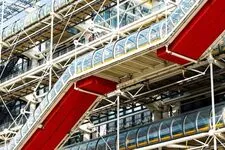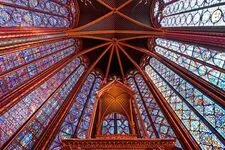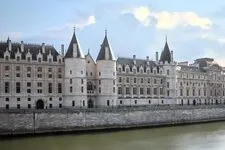History of the Centre Pompidou

Inaugurated in 1977, the Georges Pompidou National Center for Art and Culture, commonly known as the "Pompidou Center" or simply "Beaubourg," is a multicultural institution based in the Beaubourg district. The creation of this now-iconic institution in the 4th arrondissement of Paris stems from the desire of President Georges Pompidou to create a space entirely dedicated to contemporary creation of the 20th and 21st centuries. He wanted to bring together visual arts, literature, design, music, and cinema to offer the public the most comprehensive multicultural institution possible. With vast galleries of permanent and popular exhibitions, one of the three most important collections of modern and contemporary art in the world, cinema and performance halls, as well as a large public reading library (the first in Europe!), it is now evident that the former French President has largely succeeded in his bet. A look back at the history of an institution that has sparked controversy.
Popular culture versus elitist culture
If President Pompidou was so keen to create a national multicultural center, it was because he was faced with several concerns that the construction of a new type of museum could address. Indeed, in the 1970s, Paris was losing its position as a leader on the global contemporary art scene: increasingly challenged by New York, the French capital had to offer an original and recognized space worldwide.
Furthermore, it was important for Georges Pompidou that all forms of modern artistic expression, whatever they may be, be promoted and encouraged, particularly through interdisciplinarity; he did not want to make this the privilege of a restricted Parisian elite. However, his grand ambitions were not to everyone's taste and sparked intense debates. A real tug-of-war ensued between the supporters of a popular culture as advocated by Pompidou and the proponents of a much more elitist culture.
The artistic aspirations of a President
“I passionately wish that Paris has a cultural center like the one that has been sought to be created in the United States with so far unequaled success, which would be both a museum and a creation center, where visual arts would coexist with music, cinema, books, audiovisual research, etc. The museum can only be of modern art, since we have the Louvre. Creation, of course, would be modern and would evolve constantly. The library would attract thousands of readers who would simultaneously be put in contact with the arts.” - Georges Pompidou.
“The cultural ocean liner”
Despite the numerous controversies surrounding the creation of the center, the succeeding President Valéry Giscard d’Estaing inaugurated the Georges Pompidou National Center for Art and Culture on January 31, 1977. The uproar resonated beyond the borders of France, and the ceremony took place in the presence of many national and international figures from the political and cultural world.
The architecture of the center sparked a new wave of endless controversies: huge exposed pipes, escalators, metal walkways, everything that is usually hidden during construction is here deliberately exposed to the view of all. The center was thus nicknamed “Notre-Dame of Plumbing,” “the Pompidolium” for skeptics, and “the cultural ocean liner” for the more enthusiastic.
But the public quickly chose its side, and from the very first year of its opening, the center experienced great success. Initially intended to accommodate a maximum of 5,000 visitors per day, the center saw five times that number. While the majority of visitors come for the major permanent or temporary exhibitions, success was also present at the Public Information Library.
For its 20th anniversary, the center closed its doors to undergo a complete renovation. Its area was increased by more than 8,000 m², and the various surfaces and volumes of the space were reconfigured. More works can thus be exhibited, and dance performances, theater, and concerts are organized there. A brand new children's space presents two exhibitions each year. Note that the upper floors offer a stunning panorama of Paris. You can access it via the escalators that lead to the piazza.
Discover the current exhibitions at the Pompidou Center and don’t forget to book your tickets for Beaubourg in advance.
Activities nearby

Centre Pompidou - Beaubourg

Sainte-Chapelle in Paris

Visit the Conciergerie of Paris
